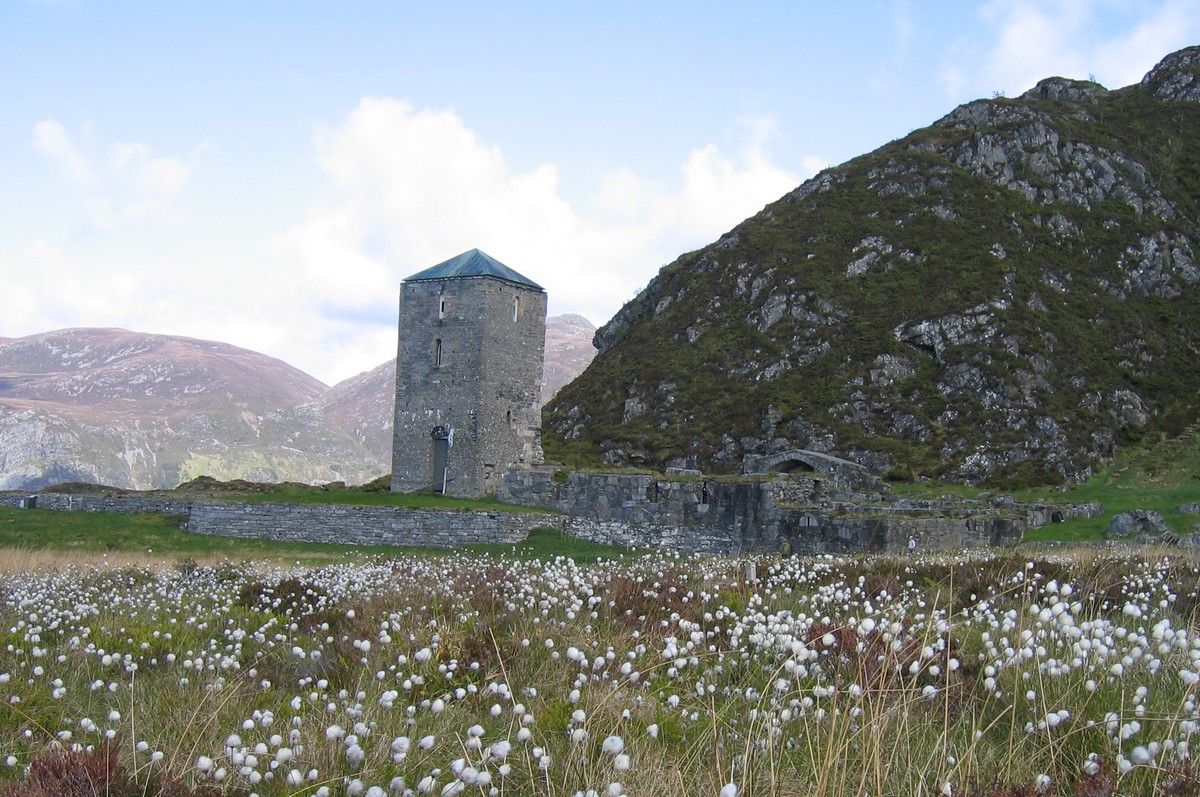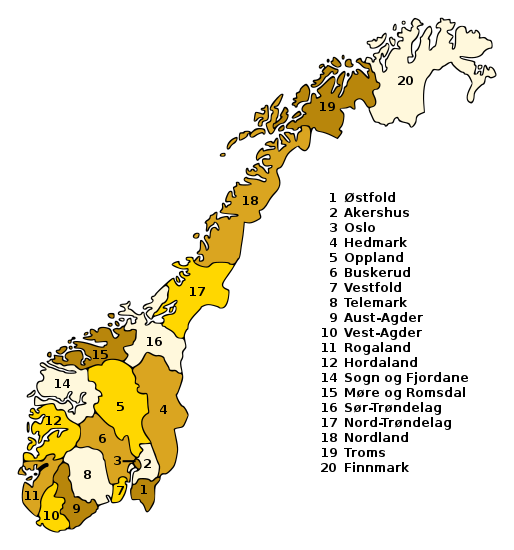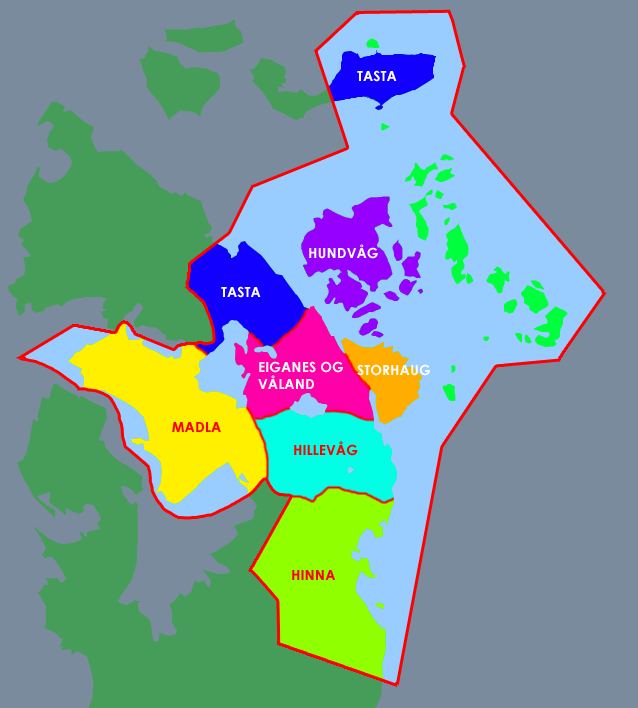|
Vestlandet
Western Norway (; ) is the region along the Atlantic coast of southern Norway. It consists of the counties Rogaland, Vestland, and Møre og Romsdal. The region has no official or political-administrative function. The region has a population of approximately 1.4 million people. The largest city is Bergen and the second-largest is Stavanger. Historically the regions of Agder, Vest-Telemark, Hallingdal, Valdres, and northern parts of Gudbrandsdal have been included in Western Norway. Western Norway, as well as other parts of historical regions of Norway, shares a common history with Denmark, the Faroe Islands and Iceland and to a lesser extent the Netherlands and Britain. For example, the Icelandic horse is a close relative of the Fjord horse and both the Faroese and Icelandic languages are based on the Old West Norse. In early Norse times, people from Western Norway became settlers at the Western Isles in the Northern Atlantic, Orkney, Shetland, the Faroe Islands an ... [...More Info...] [...Related Items...] OR: [Wikipedia] [Google] [Baidu] |
Hallingdal
Hallingdal () is a valley as well as a traditional district located in the traditional and electoral district Buskerud county in Norway. It consists of six municipalities: Flå, Nes, Gol, Hemsedal, Ål and Hol. Hallingdal is one of the major valleys of eastern Norway, on an area of 5,830 square kilometers. Hallingdal lies in the northern part of the county of Buskerud. The valley stretches from Gulsvik by Lake Krøderen to the border with Hordaland and Sogn og Fjordane. Central to the geography is relatively flat mountain area which lies above sea level. The valley is V-shaped and is drained by the Hallingdal River which originates in the western parts of Hardangervidda and flows eastwards later southwards through Hallingdal. Etymology The Old Norse form of the name was ''Haddingjadalr''. The first recorded case beginning with ''Hall-'' is from 1443. The first element seems to be the genitive case of the name of the people '' Haddingjar'' or of the male name ''Hadd ... [...More Info...] [...Related Items...] OR: [Wikipedia] [Google] [Baidu] |
Regions Of Norway
Norway is commonly divided into five major geographical regions (). These regions are purely geographical and cultural, and have no administrative purpose. However, in 2017 the government decided to abolish the current counties of Norway () and to replace them with :no:Regionreformen i Norge, fewer, larger administrative regions (). The first of these new areas came into existence on 1 January 2018, when Nord-Trøndelag and Sør-Trøndelag merged to form Trøndelag. According to most definitions, the counties of Norway are divided into the following regions (these groupings are approximate): *Northern Norway (/) **Troms **Finnmark **Nordland *Trøndelag (alt. /) **Trøndelag *Western Norway () **Møre og Romsdal **Vestland **Rogaland *Southern Norway (/) **Agder *Eastern Norway (/) **Vestfold **Telemark **Buskerud **Akershus **Østfold **Innlandet **Oslo The division into regions is, by convention, based on geography, geographical and also Norwegian language, dialectical differ ... [...More Info...] [...Related Items...] OR: [Wikipedia] [Google] [Baidu] |
Bergen
Bergen (, ) is a city and municipalities of Norway, municipality in Vestland county on the Western Norway, west coast of Norway. Bergen is the list of towns and cities in Norway, second-largest city in Norway after the capital Oslo. By May 2025 the population is 294 029 according to Statistics Norway. The municipality covers and is on the peninsula of Bergenshalvøyen. The city centre and northern neighbourhoods are on Byfjorden (Hordaland), Byfjorden, 'the city fjord'. The city is surrounded by mountains, causing Bergen to be called the "city of Seven Mountains, Bergen, seven mountains". Many of the extra-municipal suburbs are on islands. Bergen is the administrative centre of Vestland county. The city consists of eight boroughs: Arna, Bergen, Arna, Bergenhus, Fana, Bergen, Fana, Fyllingsdalen, Laksevåg, Ytrebygda, Årstad, Bergen, Årstad, and Åsane. Trading in Bergen may have started as early as the 1020s. According to tradition, the city was founded in 1070 by King Ol ... [...More Info...] [...Related Items...] OR: [Wikipedia] [Google] [Baidu] |
Counties Of Norway
There are 15 counties in Norway. The 15 county, counties are administrative division, administrative regions that are the first-level administrative divisions of Norway. The counties are further subdivided into 357 municipalities of Norway, municipalities (). The island territories of Svalbard and Jan Mayen are outside the county divisions and they are ruled directly from the national level. The capital city of Oslo is both a county and a municipality. In 2017, the Solberg's Cabinet, Solberg government decided to abolish some of the counties and to merge them with other counties to form larger ones, reducing the number of counties from 19 to 11, which was implemented on 1 January 2020. This sparked popular opposition, with some calling for the reform to be reversed. The Storting voted to partly undo the reform on 14 June 2022, with Norway to have 15 counties from 1 January 2024. Three of the newly merged counties, namely Vestfold og Telemark, Viken (county), VikenLars R ... [...More Info...] [...Related Items...] OR: [Wikipedia] [Google] [Baidu] |
Vestland
Vestland is a Counties of Norway, county in Norway. The county is located in Western Norway, and its administrative centre is Bergen, where the executive and political leadership is based. The County governor (Norway), County Governor is based in Hermansverk. Vestland is one of two counties in Norway that have Nynorsk as their official written language form. Vestland was created on 1 January 2020, when the former counties of Hordaland and Sogn og Fjordane were merged. History Vestland county is a newly created county, but it has been inhabited for millennia. The area was made up of many petty kingdoms under the Gulating during the Middle Ages. The northern part was then known as ''Firdafylke'' (now the Fjordane region; Nordfjord-Sunnfjord), the central area was known as ''Sygnafylke'' (now the Sogn region), and the southern part was known as ''Hordafylke''. In the early 16th century, Norway was divided into four ''len''. The Bergenhus len was headquartered in Bergen and encompa ... [...More Info...] [...Related Items...] OR: [Wikipedia] [Google] [Baidu] |
Stavanger (city)
Stavanger, officially the Stavanger Municipality, is a city and municipality in Norway. It is the third largest city and third largest metropolitan area in Norway (through conurbation with neighboring Sandnes) and the administrative center of Rogaland county. The municipality is the fourth most populous in Norway. Located on the Stavanger Peninsula in southwest Norway, Stavanger counts its official founding year as 1125, the year the Stavanger Cathedral was completed. Stavanger's core is to a large degree 18th- and 19th-century wooden houses that are protected and considered part of the city's cultural heritage. This has caused the town center and inner city to retain a small-town character with an unusually high ratio of detached houses, and has contributed significantly to spreading the city's population growth to outlying parts of Greater Stavanger. The city's population rapidly grew in the late 20th century due to its oil industry. Stavanger is known today as the Oil Capi ... [...More Info...] [...Related Items...] OR: [Wikipedia] [Google] [Baidu] |
First Level NUTS Of The European Union
The Nomenclature of Territorial Units for Statistics, Classification of Territorial Units for Statistics (NUTS, for the French ) is a geocode standardization, standard for referencing the administrative divisions of countries for statistical purposes. The standard was developed by the European Union. There are three levels of NUTS defined, with two levels of local administrative units (LAUs). Depending on their size, not all countries have every level of division. One of the most extreme cases is Luxembourg, which has only LAUs; the three NUTS divisions each correspond to the entire country itself. There are 92 first-level NUTS regions of the European Union, and 240 second-level NUTS regions. Former member states Below are the first-level NUTS regions of former member states of the European Union. EFTA member states Below are the first-level NUTS regions of EFTA. EU candidates Below are the first-level NUTS regions of candidates of the European Union. See also ... [...More Info...] [...Related Items...] OR: [Wikipedia] [Google] [Baidu] |
Bergen (city)
Bergen (, ) is a city and municipalities of Norway, municipality in Vestland county on the Western Norway, west coast of Norway. Bergen is the list of towns and cities in Norway, second-largest city in Norway after the capital Oslo. By May 2025 the population is 294 029 according to Statistics Norway. The municipality covers and is on the peninsula of Bergenshalvøyen. The city centre and northern neighbourhoods are on Byfjorden (Hordaland), Byfjorden, 'the city fjord'. The city is surrounded by mountains, causing Bergen to be called the "city of Seven Mountains, Bergen, seven mountains". Many of the extra-municipal suburbs are on islands. Bergen is the administrative centre of Vestland county. The city consists of eight boroughs: Arna, Bergen, Arna, Bergenhus, Fana, Bergen, Fana, Fyllingsdalen, Laksevåg, Ytrebygda, Årstad, Bergen, Årstad, and Åsane. Trading in Bergen may have started as early as the 1020s. According to tradition, the city was founded in 1070 by King Ol ... [...More Info...] [...Related Items...] OR: [Wikipedia] [Google] [Baidu] |
Norway
Norway, officially the Kingdom of Norway, is a Nordic countries, Nordic country located on the Scandinavian Peninsula in Northern Europe. The remote Arctic island of Jan Mayen and the archipelago of Svalbard also form part of the Kingdom of Norway. Bouvet Island, located in the Subantarctic, is a Dependencies of Norway, dependency, and not a part of the Kingdom; Norway also Territorial claims in Antarctica, claims the Antarctic territories of Peter I Island and Queen Maud Land. Norway has a population of 5.6 million. Its capital and largest city is Oslo. The country has a total area of . The country shares a long eastern border with Sweden, and is bordered by Finland and Russia to the northeast. Norway has an extensive coastline facing the Skagerrak strait, the North Atlantic Ocean, and the Barents Sea. The unified kingdom of Norway was established in 872 as a merger of Petty kingdoms of Norway, petty kingdoms and has existed continuously for years. From 1537 to 1814, Norway ... [...More Info...] [...Related Items...] OR: [Wikipedia] [Google] [Baidu] |
Stavanger
Stavanger, officially the Stavanger Municipality, is a city and municipalities of Norway, municipality in Norway. It is the third largest city and third largest metropolitan area in Norway (through conurbation with neighboring Sandnes) and the administrative center of Rogaland county. The municipality is the fourth most populous in Norway. Located on the Stavanger Peninsula in southwest Norway, Stavanger counts its official founding year as 1125, the year the Stavanger Cathedral was completed. Stavanger's core is to a large degree 18th- and 19th-century wooden houses that are protected and considered part of the city's cultural heritage. This has caused the town center and inner city to retain a small-town character with an unusually high ratio of detached houses, and has contributed significantly to spreading the city's population growth to outlying parts of Greater Stavanger. The city's population rapidly grew in the late 20th century due to its oil industry. Stavanger is know ... [...More Info...] [...Related Items...] OR: [Wikipedia] [Google] [Baidu] |
Icelandic Language
Icelandic ( ; , ) is a North Germanic languages, North Germanic language from the Indo-European languages, Indo-European language family spoken by about 314,000 people, the vast majority of whom live in Iceland, where it is the national language. Since it is a West Scandinavian languages, West Scandinavian language, it is most closely related to Faroese language, Faroese, western Norwegian dialects, and the extinct language Norn language, Norn. It is not mutually intelligible with the continental Scandinavian languages (Danish language, Danish, Norwegian language, Norwegian, and Swedish language, Swedish) and is more distinct from the most widely spoken Germanic languages, English language, English and German language, German. The written forms of Icelandic and Faroese are very similar, but their spoken forms are not Mutual intelligibility, mutually intelligible. The language is more Linguistic conservatism, conservative than most other Germanic languages. While most of them hav ... [...More Info...] [...Related Items...] OR: [Wikipedia] [Google] [Baidu] |










